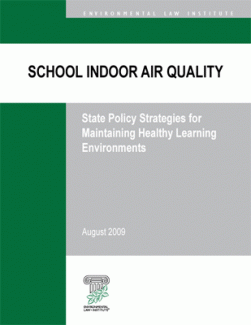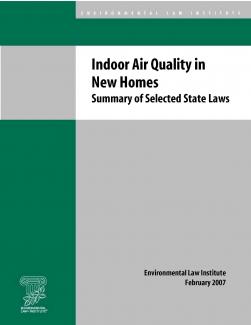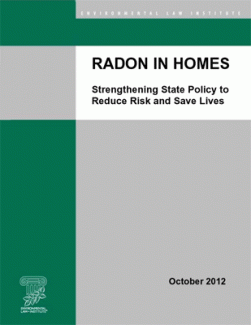School Indoor Air Quality: State Policy Strategies for Maintaining Healthy Learning Environments

The quality of the air inside our nation’s 125,000 schoolhouses is important not only to the physical health and well-being of students and staff, but also to the core mission of our schools — educational excellence and academic achievement. This report discusses how state policy can ensure that all K-12 schools address basic IAQ issues as part of their ongoing operations and maintenance activities. The report examines leading state policy models and identifies key considerations for developing an effective policy.

